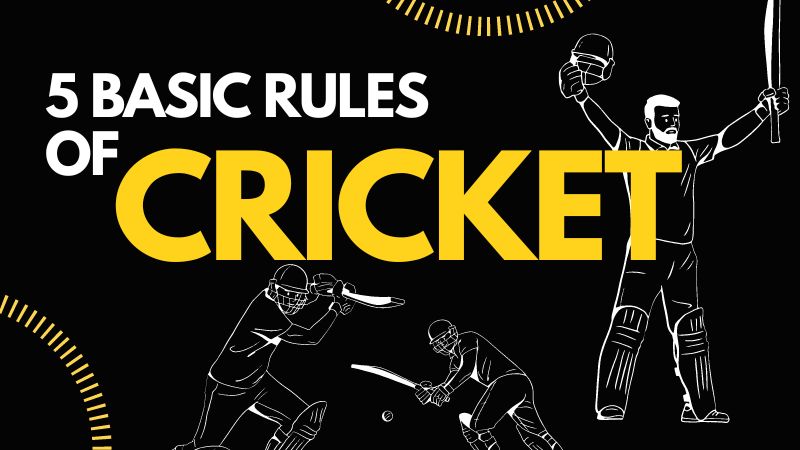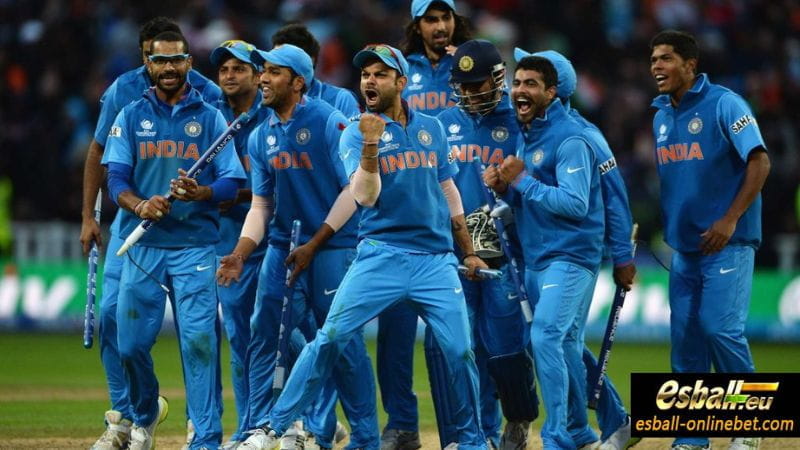- All
- Online Sport Betting Tips
- Indian Premier League Betting
- Big Bash League
- Cricket World Cup 2023
- Cockfight Game Betting
- Kabaddi Information 2023
- Cricket Betting Sites
- T20 World Cup Betting
- Asia Cup Betting
- ODI World Cup Betting
- Test Championship Betting
- Cricket Teams & Players Highlights
- Cricket News
- Cricket Schedule
Introducing the 5 basic rules of cricket, you can learn about how long a cricket match usually takes, the player position rules, the defending team, the batting team, and the cricket match game results rules.
Knowing these rules not only makes watching or playing cricket more enjoyable but also ensures you use equipment properly and follow safety guidelines during gameplay, comprehending the rules is essential for fair play and sportsmanship, which are crucial elements of any sport, including cricket.
Understanding cricket rules can provide insights into the game that may be useful for those interested in sports betting. Knowing the intricacies of the sport allows individuals to make more informed decisions when betting on cricket matches, increasing the excitement and potential rewards of sports betting experiences.
Cricket originated in the 12th century in England and is a sport in which points are scored by hitting a ball with a wooden bat, primarily involves batting, bowling, and fielding.
Cricket match participants are divided into two teams, usually with 11 players each. One team bats while the other fields. The team with the highest score after both innings wins.

5 Basic Rules of Cricket 1: How Long Does A Cricket Match Usually Take
The duration of cricket matches varies. In international cricket, a Test match lasts for six hours or more per day. Each team bats twice, with breaks for lunch and tea.
There are also One Day Internationals (ODI), where each team bats only once with a limited number of overs, commonly referred to as limited overs matches. ODIs are played with 50 overs per side.
Additionally, there are T20 Internationals, where each team bats for 20 overs.
5 Basic Rules of Cricket 2: Player Position
Cricket primarily revolves around batting, bowling, and fielding.
- Teams typically consist of 11 players, with one team batting while the other fields.
- Batting side players are called batsmen. During the game, only two batsmen are allowed on the field at a time. One batsman focuses on scoring runs, while the other supports.
- The fielding side consists of 11 players on the field simultaneously. One player is the bowler, and one is the wicketkeeper.
- The bowler delivers the ball to try to hit the wicket behind the batsman, aiming to get the batsman out. Other players are outfielders responsible for catching balls hit by the batsman and preventing the batting team from scoring runs.
Both teams can have one substitute player, but substitutes can only defense.
5 Basic Rules of Cricket 3: Defending Team
The defending team aims to prevent the batting team from scoring and dismissing their batsmen. The following are the conditions for dismissing a batsman:
- Bowled: When the bowler hits the wickets.
- Caught: When a fielder catches the ball before it touches the ground after being hit by the batsman.
- Leg Before Wicket (LBW): If the batsman's leg obstructs the ball that would otherwise hit the wicket.
- Run Out: When a fielder hits the wickets before the batsman reaches the crease.
- Stumped: When the wicketkeeper hits the wickets with the ball while the batsman is out of the crease.
- Handled the Ball: If the batsman touches the ball deliberately with a hand.
- Hit the Ball Twice: If the batsman intentionally hits the ball twice.
- Timed Out: If the new batsman fails to arrive within three minutes of the previous batsman being dismissed.
- Hit Wicket: If the batsman hits the wicket with the bat or the body accidentally.
- Obstructing the Field: If the batsman obstructs the fielder's view intentionally.
5 Basic Rules of Cricket 4: Batting Team
- Only two players from the batting team are present at a time, with one designated as the batsman responsible for scoring runs and completing runs.
- Each run between the wickets earns one point.
- If the ball reaches the boundary, four runs are scored.
- If the ball goes out of the boundary without bouncing, six runs are scored.
- Although all eleven players of the batting team have a chance to bat, if ten batsmen are out, the entire team is considered out (all out).
- A match doesn't necessarily end when all batsmen are out; the captain can declare the innings over if they believe their team has scored enough runs.
- This declaration usually happens in matches with unlimited overs.
- Additionally, in Test matches, if the first innings' score exceeds the second innings' score by 150 or more runs, the captain of the team batting second can choose to have the opposing team bat again in the second innings.
5 Basic Rules of Cricket 5: Victory, Draw, Tie and No Result
Here are the cricket rules to define if the cricket match results are victory, draw tie, or no result.
Cricket Match - Victory
A team can win under the following circumstances:
- Successfully chasing the target score with N wickets remaining.
- Defending the target score and winning by N runs.
- Where N = the difference between the winning team's total runs and the losing team's total runs.
- Winning by an innings and N runs, which occurs when the opposing team is bowled out in their second innings with the first innings deficit being more than the runs scored by the winning team in their first innings.
- Where N = the difference between the winning team's total runs and the losing team's total runs.
Cricket Match - Draw
- A draw occurs in matches with unlimited overs when neither team achieves victory within the allotted time.
- It happens when the bowling team fails to dismiss the batting team and the batting team fails to reach the target score.
- Adverse weather conditions often contribute to a draw.
Cricket Match - Tie
- Ties are extremely rare and occur when the total runs of both teams are equal.
Cricket Match - No Result
- A match is considered a no-result if it ends in a tie in unlimited overs matches.
- This means that the match doesn't produce a winner due to special circumstances.
- No-result matches often occur due to interruptions caused by weather conditions.
Continue to take care of the majority of Esball Eu loyal players!
Now! Esball Eu is once again launching the Sign Up free ₹100 Welcome Bonus and 200% JILI Slot Game Bonus For First Deposit Casino Promotion.
You can also click to enter the Online Casino Bonus & Promo introduction, which provides more diverse casino bonuses.














